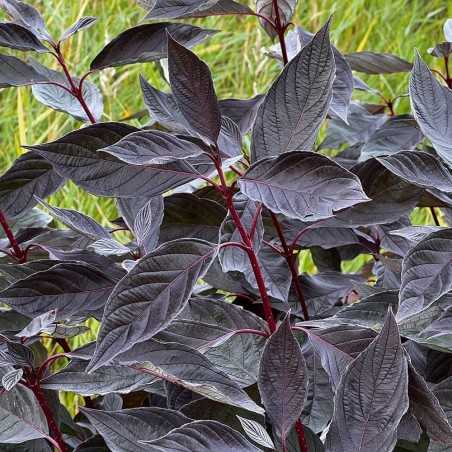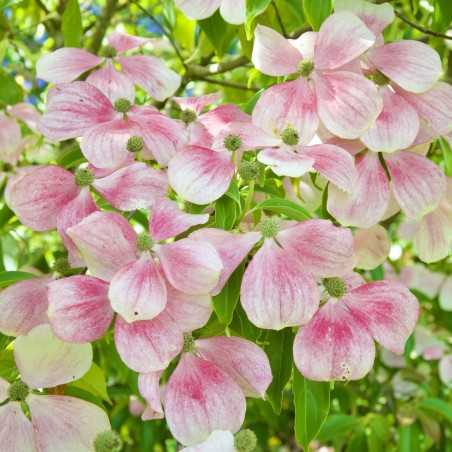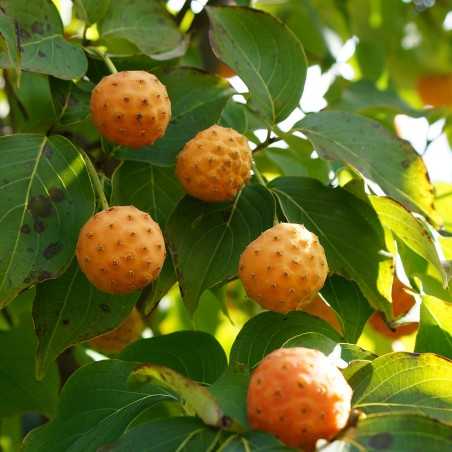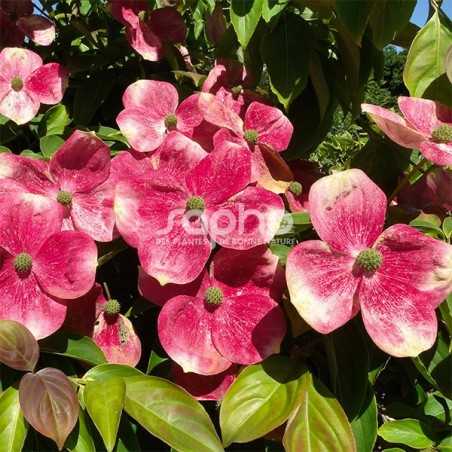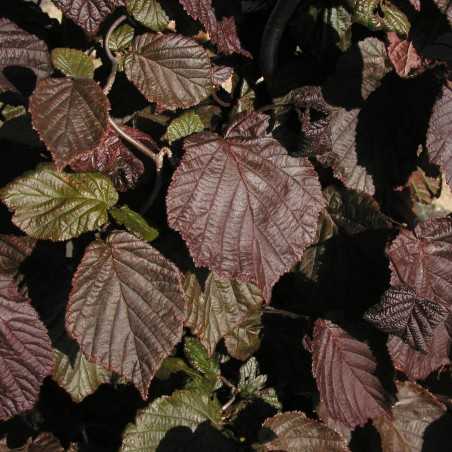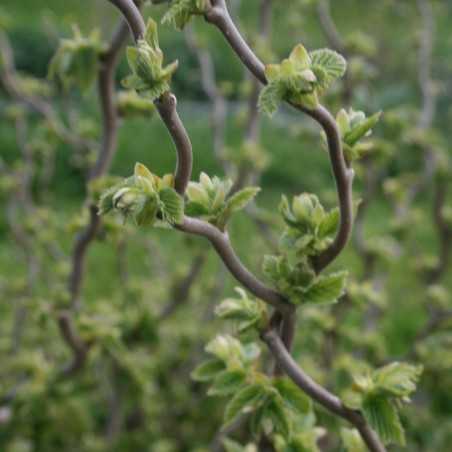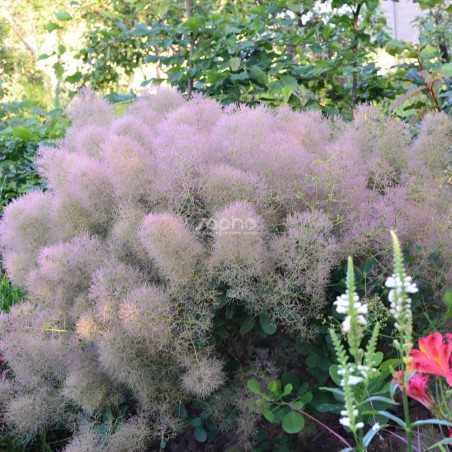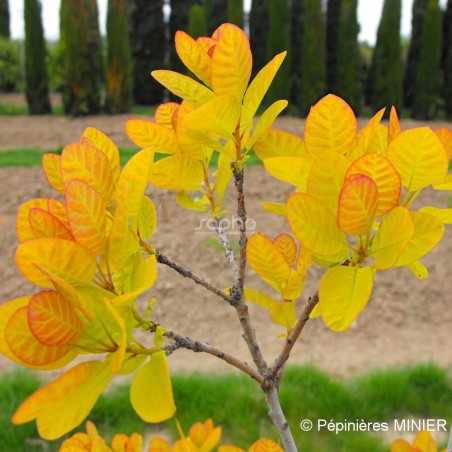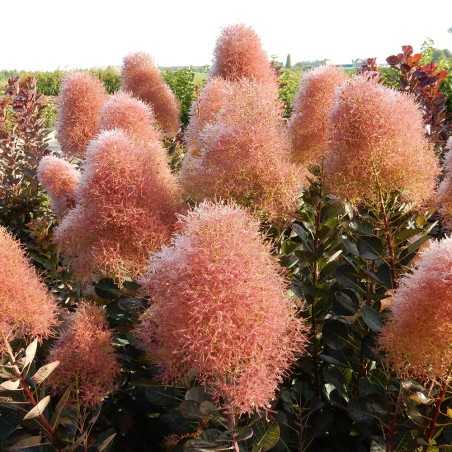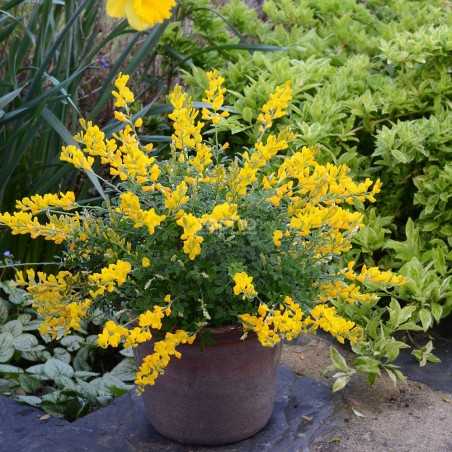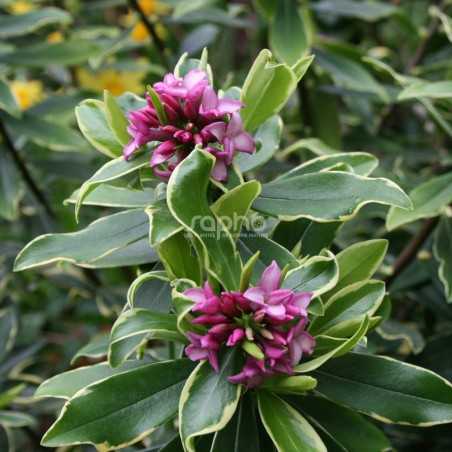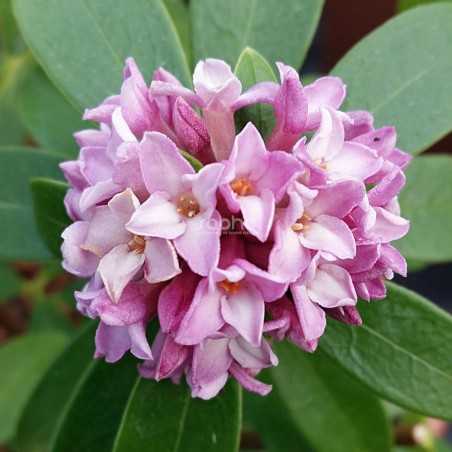Year round attractive and spectacular autumn colours
Dark green spring leaves,
Foliage turns dark purple in summer, ending black at fall
Velvety grey hue on the foliage, especially on the underside, highlights the dark plant
Red stems in autumn/ winter
More upright growth than other Cornus alba, can be used as hedge
Robust, easy-growing, little-maintenance, can adapt to various soil, dry or moist
Filter By
Foliage
Position
Categories
Menu
Trees and shrubs
The great elegance of Cornus hongkongensis mixed with cornus kousa's assets
This Cornus has larger, more colorful flowers, evolving from ivory to pink, then light red. Fruits are twice as large, green, then turning red.
What's more, it stands out for its young shoots and coppery winter foliage, which add a touch of originality!
It's a vigorous plant, with an upright habit and flexible side branches, which is easy to grow and forms perfectly on an axis.
Perfectly adapted to mild climates, it's a real showstopper in the garden!
The elegance of Cornus is enhanced by the originality of its fruit
This variety blooms abundantly with white flowers from late May to early June.
Its decorative fruits, visible from afar, have original colors: yellow evolving into pumpkin-orange when ripe.
Its foliage also changes from green to orange-yellow in autumn.
This large shrub is easy to grow and has a flared habit when young.
Ideal as an isolated plant in the garden.
Spectacular for the size, abundance and changing color of its flowers!
This Cornus is distinguished by its longevity and abundant flowering. Its flowers change color with the seasons, from light salmon to bright pink to red.
In autumn, large red berries appear and persist until hard frost.
Its shape makes it ideal for production.
Its vigor and upright form with flexible branches make it an ideal shrub or small tree for large gardens and landscaped parks.
nb: color evolution may vary according to region and climate.
The corkscrew hazel with purple foliage.This variety combines the charm of the corkscrew hazel and the quality of the foliage of the purple hazel. With a height of about 2,00 to 2.50 m when fully grown, 'Red Majestic' has a good vegetation and similar characteristics as those of the Corylus avellana 'Contorta'. The very purple colour of the foliage during the budding stage and the early spring fades during the summer to a greener shade, depending on the position.The flowers as catkins, in March, are also purple; so is the husk of the fruit, more or less.
A small hazelnut tree, very twisted and supple at the same time, which puts on a magnificent show in winter!
This variety is an improvement on the 'Contorta' variety: more branched, more compact, flexible and less brittle branches, twisted twigs to the extreme...
Catkins appear early on the plant and remain for a long time.
Easy to grow, with a compact, slow-growing habit, this hazelnut is perfect for pots, balconies or terraces.
Astonishing smoke tree, compact and floriferous.'Young Lady', has a particularly dense and rounded shape and is of good growth.Its rounded, green and deciduous foliage has beautiful yellow to red tones in the autumn.This "smoke tree" is covered in spectacular silky, pinky-white plumes from June onwards. After cutting the wilted flowers, and under good conditions, new stems appear to flower again until October.In shrub borders or in pots, 'Young Lady' is light and decorative at the same time.It can also be used with cut flowers.
A cultivation which will wake up beds and mixed hedgesGOLDEN LADY® 'MINCOJAU3' is a real improvement on the existing golden varieties. In spring it has beautiful young, bright orange shoots which progressively turn golden yellow. The foliage turns a yellow green in summer and is not affected by the sunlight. It becomes orange in the autumn.The cream - pink inflorescences appear in July.Being dense and branching naturally, this cultivation is easy to grow in containers.The bright and varied tints of the foliage are at their best when the shrub is grown in a bed or a mixed hedge.
Exceptional floridity and decorative plumes from early to late summer!
This shrub has an exceptionally abundant and long-lasting bloom of large, deep-pink spikes, which appear on all branches in early summer, with an upturn in the season.
Its uniform purple foliage is a perfect match for its flowers.
Its upright, well-branched habit makes it easy to grow and manage in the garden.
Hardy and dry-hardy, it adapts perfectly to the soil.
Just like a sun! Must be potgrown and protected during cold winters.This INRAE - EUROGENI variety has been selected for its regular growth, more compact and branched than the standard species, even without trimming. For production in nurserys no regulators are needed.Beautiful healthy dark green foliage and fine wood. The abundant scented flowering in March-April is 8 - 10 days later than the Cytisus Racemosus and of a more orangey yellow.A real sun in spring, PHEBUS® must be potgrown and protected during cold winters.Trophies: Bronze Medal at Innovert® 2016 Horticulture category (Angers - FRANCE)
An evergreen and brightly variegated foliage, highly fragrant flowers, and great branching as a bonus!Resulting from a natural mutation, Daphne odora 'Rogalski' is more compact, more branched, and with smaller leaves than the original variety, Daphne odora 'Aureomarginata'. 'Rogalski' is particularly suitable for small gardens. It is also easier to grow because it branches very well from the start. Its shorter branches are stronger at the time of flowering. Daphne 'Rogalski' retains all the superb qualities of the original variety: a beautiful evergreen foliage, bright green with yellow edges, and flowers with an intense fragrance. Among the range of small evergreen shrubs available for the garden, it is one of the first to flower. (February - March). It brings interest with its intense fragrance and lights up the dark corners to the garden with its foliage.
An amethyst bloom with a powerful jasmine scentThe originality of this new variety is the violet-lilac of its flowers that bloom around the end of winter and start of spring. The abundant flowers release a powerful jasmine scent detectable from several metres away. Its other features are typical of the perfumed Daphne: attractive clusters of star-shaped, tubular flowers, a persistent, brilliant green foliage and tough, lanceolate leaves. It forms a small, shrubby bush. To make the most of its scent, it should ideally be placed in a passageway or in the garden at the entrance to the house.

